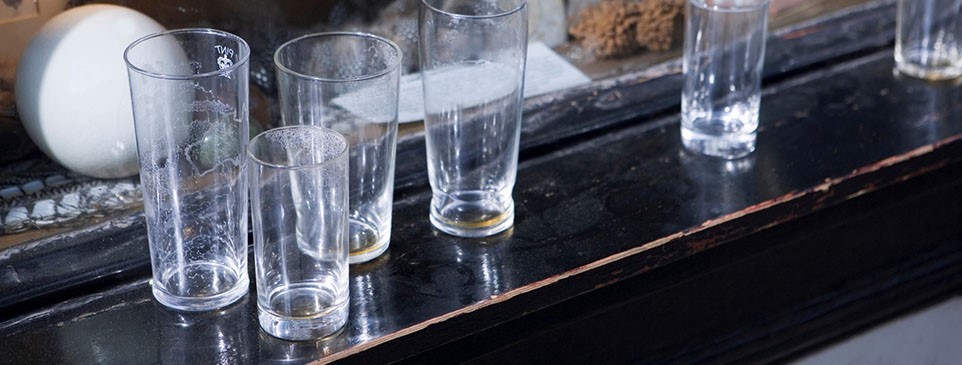The Dos and Don’ts of Good Glass Care

In the 2004 Annual AB InBev Report it was revealed that a whopping 34% of clientele will vote with their feet, never to return, if the quality of the serve to be less than perfect. That can have a catastrophic effect on turnover. The double whammy here is that you know it’s having a fabulous effect on the turnover of your local competition.
Along with adhering to best practice with line cleaning, proper glass care ensures customer satisfaction with every serve.
Our handy guide gives you the low down on how to keep your glassware in tiptop condition – happy customers and a lower glass replacement budget!
Caring for your glassware in the glass washer
To ensure your glasses come out sparkling follow our best practice guidelines:
- Ensure all glasses are empty of both solids (fruit slices, pips, cocktail sticks etc.) and liquid residues.
- Ensure all speciality drinks containing cream are rinsed before being loaded into the machine.
- Never stack glasses on top of each other in the glasswasher.
- Avoid handling glassware during drying time.
- Don’t leave glassware in the machine after the cycle is complete.
Caring for your glasswasher
Your glasswasher will give you excellent service if you look after it. Correct care will both protect and beautifully clean your glassware. Added to which it will extend the life of both the machine and what goes in it. Our top tips for maintaining your glasswasher are:
- Test your incoming water and adjust detergent levels as required.
- Before use, check that the inside of the machine is completely clean and free of debris. Clean out the drain trap, check the wash filter and wipe around the doors.
- Remove and thoroughly clean all jets, filters, rinse and wash arms, etc. every 7 days.
- Avoid overcrowding the wash trays – Putting too much into a glasswasher will reduce its effectiveness.
- Make sure it is operating at the right temperature – Get your service engineer to check your wash and rinse temperatures.
- Ensure the washer is at the correct temperature (wash and rinse waters) before inserting the trays.
- If you are not using a fresh water glasswasher, then you should empty the wash tank after every 8-10 cycles – A non-freshwater machine simply recycles the wash water meaning that by the end of the sales session you will be cleaning your glasses in very dirty water.
- Before removing washed glasses ensure the total programme of wash and rinse is completed.
- Drain and rinse out machine after every trading session.
Chemical Elements
In order to maximise the cleanliness of your glassware and the effectiveness and longevity of your machine, bear the following in mind:
- Ensure you are using the correct dosage of detergent and rinse aid.
- Use the correct rinse aid for your detergent – Manufacturers have designed their detergents and rinse aids to work together.
- Unless a specially formulated powder product with glass protection, always use liquid. Lower quality powder detergents can scratch and damage glass.
- Good quality glass washing detergents will include water softening agents that prevent spotting in hard water areas and help to remove debris. Also a detergent chemical which will remove tannin stains, proteins and yeast residues.
- Good quality rinse aids are worth the money – rinse aids are designed to reduce drying time by making the water run off the glass and evaporate faster as well as prevent streaks and water spotting.
To ensure the perfect serve only use high quality chemicals and hygiene products – if you are unsure about the products you are using, just ask the CellarCraft guru

Download the entire CellarCraft guide

